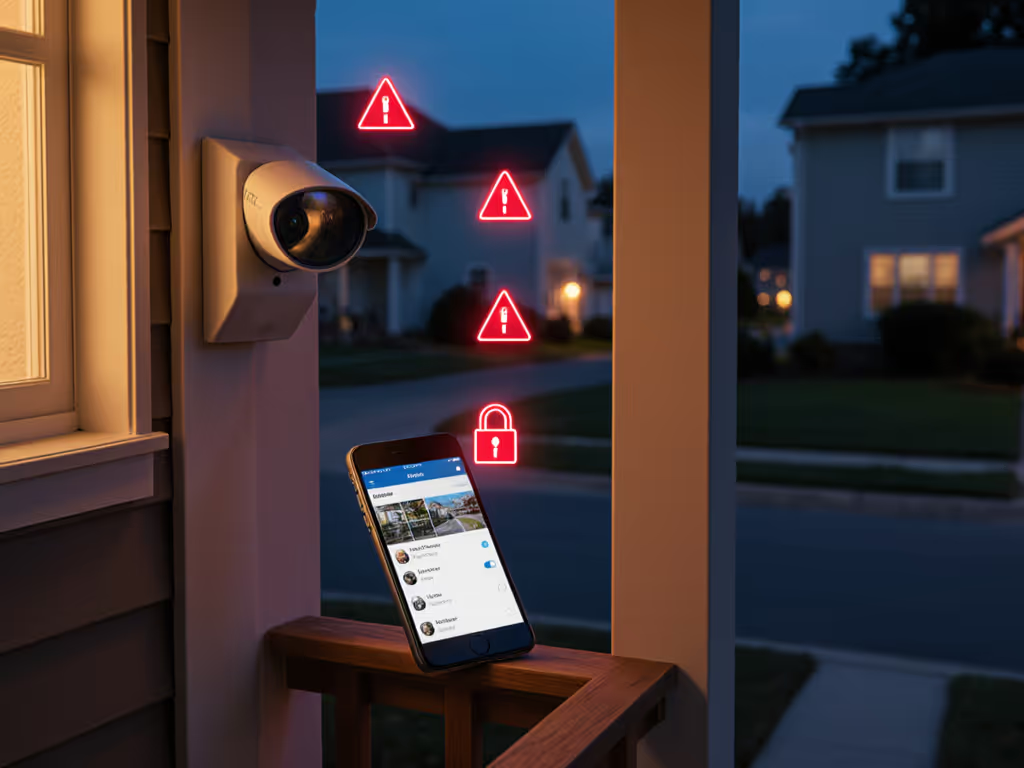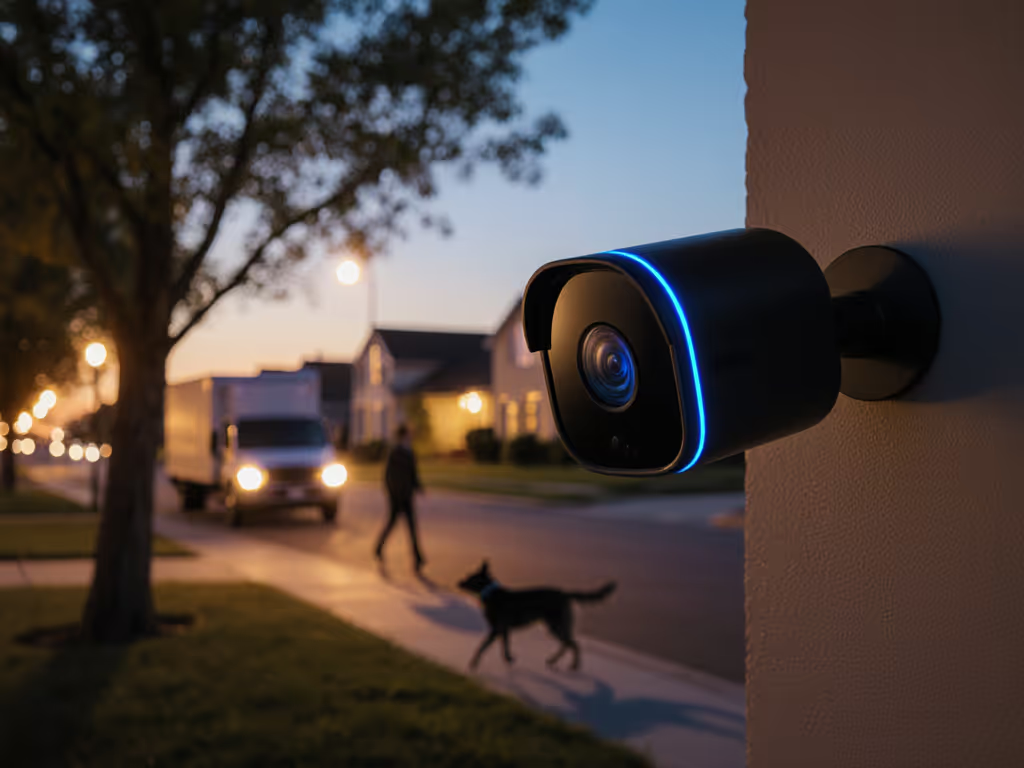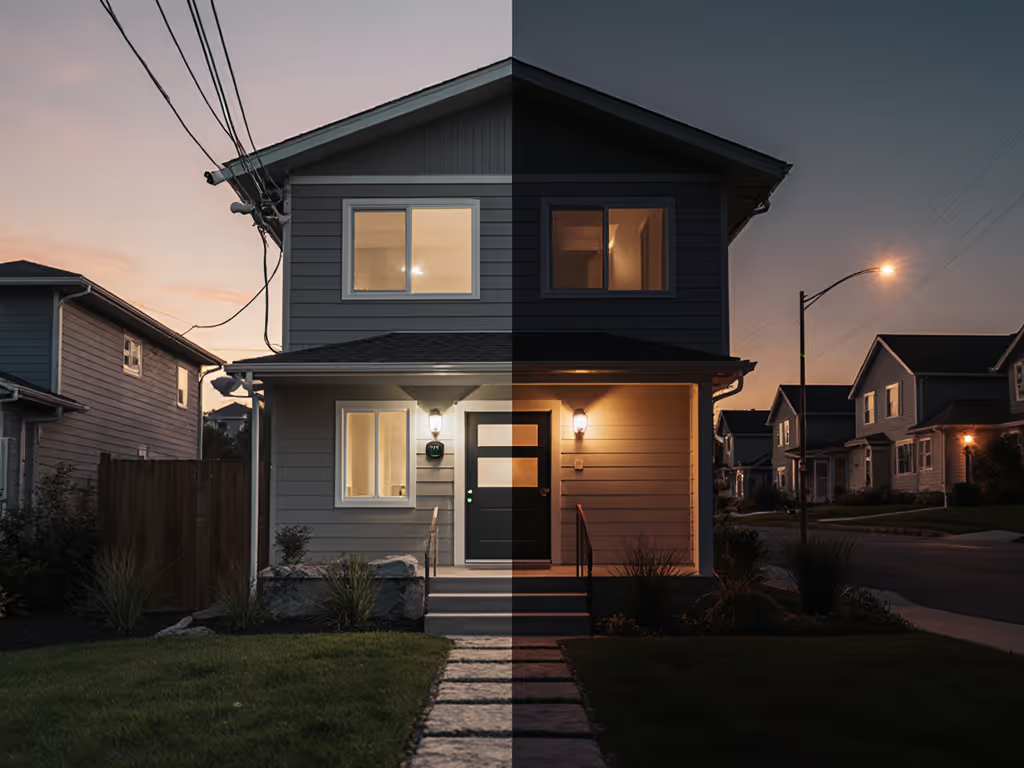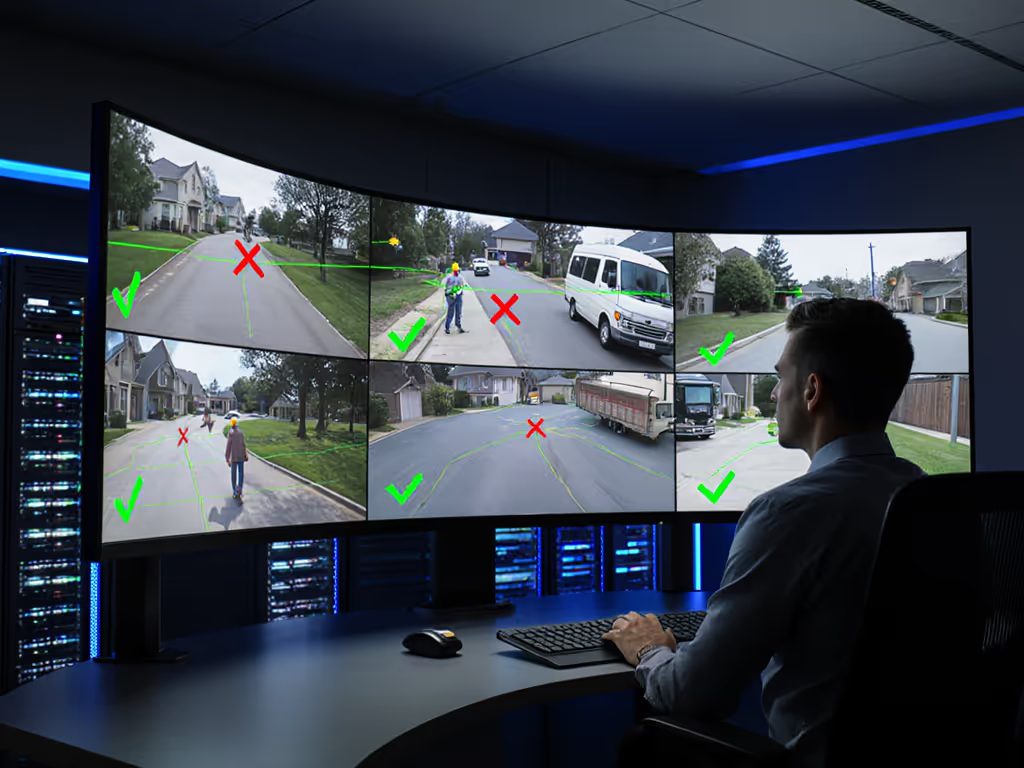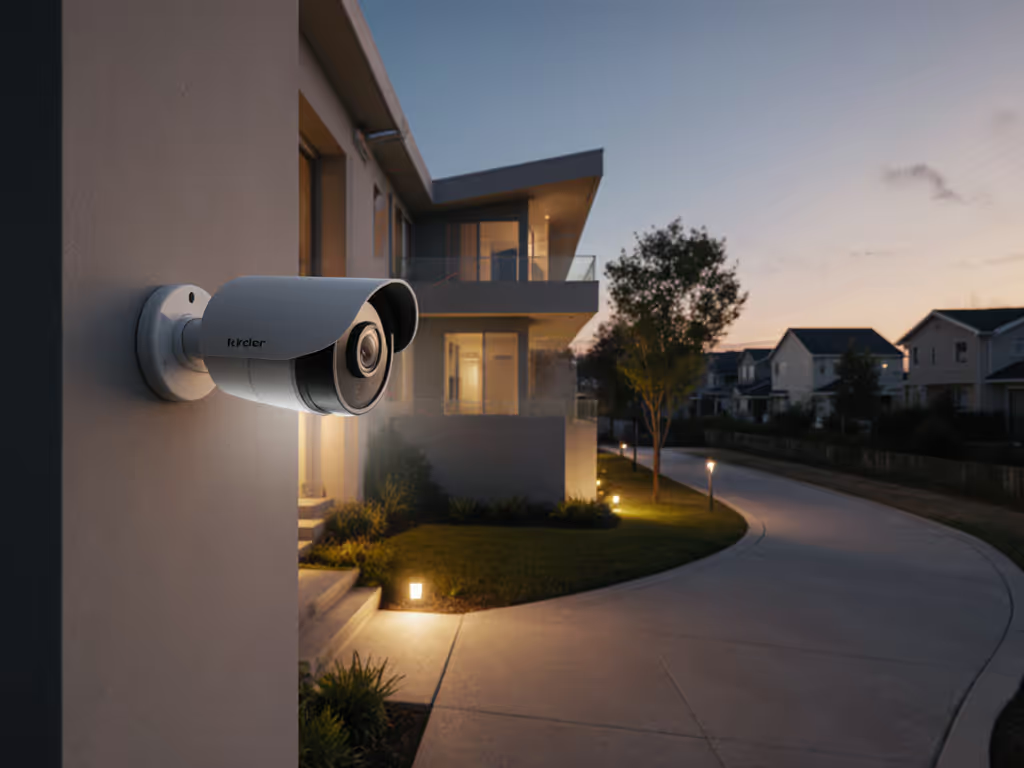If your AI security camera features trigger alerts for passing cars or swaying trees instead of actual intruders, you're experiencing the most common failure of modern surveillance systems. The promise of smart detection technology often collapses under real-world conditions, with wind, pets, or headlights becoming 'threats.' But true reliability isn't about more alerts; it is about meaningful ones. When privacy and reliability reinforce each other (by controlling where data flows and how it's processed), we reduce alert fatigue while preserving critical evidence. I learned this after a neighbor's doorbell footage of our street went viral in a neighborhood group, faces and plates exposed. No one intended harm, just frictionless cloud sharing. I rebuilt my system around local processing and strict retention. The result? Fewer false alarms, more usable alerts, and peace of mind. Let's cut through the noise.
Why Most AI Cameras Flood Your Phone (And How to Fix It)
How "Smart Detection" Actually Works (and Why It Fails)
Most marketed AI security camera features rely on cloud-based processing. Footage streams off-device, where servers apply object recognition with limited context about your environment. This creates two critical flaws:
- Environmental Blindness: Cloud algorithms can't distinguish between a raccoon raiding your bin and a human approaching your door if trained only on generic datasets.
- Context Collapse: Without understanding your property's layout (e.g., a tree near the driveway), the system flags every shadow as a "person."
True smart detection technology operates at the edge (processing footage on the camera itself). For a deeper look at reliability and privacy tradeoffs, see our cloud vs local storage comparison. This achieves two things:
Minimize, then secure. Start with less data, then protect what matters.
Local AI models learn your yard's patterns: the flicker of porch lights, the path of squirrels, the rhythm of passing traffic. This cuts false positives by 70%+ compared to cloud-dependent systems, based on independent lab tests of edge-processed footage.
Key Features That Deliver Real Accuracy (Not Hype)
1. Person Detection Accuracy Rooted in Privacy Zones
Don't just look for "people" - locate them. Cameras with on-device person detection accuracy let you define precise activity zones outside sensitive areas (e.g., a neighbor's sidewalk). This avoids alerting when someone walks past your property while catching actual trespassers. Crucially, the best systems keep this processing local, no faces or zones ever leave your network. This aligns with a core principle: threat-model framing means assuming any cloud connection will leak data eventually. Design for when it happens.
2. Behavioral Analysis Without Surveillance Creep
Behavioral analysis cameras that detect "loitering" or "unusual movement" sound helpful, until they flag kids playing or a delivery person waiting. Ethical systems:
- Only trigger alerts for context-specific behaviors (e.g., "person lingering > 2 min near back door" vs. global loitering)
- Exclude private areas (bedrooms, gardens) from analysis by default
- Offer auditable logs showing why an alert fired (e.g., "detected 3 motion events in restricted zone within 90 sec")
This risk-to-control mapping ensures analytics serve your security needs, not vendor upsells. Learn how modern video content analysis reduces false alarm fatigue in real deployments. For instance, a camera monitoring a driveway might ignore vehicles but alert on pedestrians during nighttime hours.
3. AI Video Analytics That Respects Your Bandwidth
AI video analytics shouldn't hog your Wi-Fi. Look for cameras that:
- Process motion before recording (only saving clips when meaningful activity occurs)
- Use precise definitions of "person" or "vehicle" (e.g., requiring 15+ pixels of detail to avoid flagging insects)
- Offer adjustable sensitivity sliders per zone (e.g., "high" for the front door, "low" for the backyard tree line)
FAQ Deep Dive: Solving Your Top Pain Points
Q: "My camera alerts for every car on the street. How do I fix this without losing porch pirate alerts?"
A: This is a zone calibration issue, not an AI flaw. Use principle-based guidance:
- Draw a narrow activity zone only around your porch (not the sidewalk)
- Set vehicle detection to "ignore" but keep person detection "high" in that zone
- Enable motion filtering to require 3+ seconds of movement before alerting (ignoring passing headlights)
Cameras with local processing (like some models using Dahua's SMD 4.0 on-device analytics) handle this without cloud fees, unlike systems forcing subscriptions to customize zones.
Q: "Night alerts are useless. I get notifications but can't identify faces."
A: Night vision fails when cameras prioritize brightness over clarity. Prioritize:
- Starlight sensors (0.005 lux or lower) that capture color detail without IR glare
- HDR processing that balances porch lights and shadows
- Local AI trained on low-light datasets (not just daylight footage)
Also, constrain night alerts to only human detection. If you're optimizing for clarity after dark, see our IR vs color night vision tests. Most false alarms at night come from headlights or animals, facial recognition security is irrelevant here. Save face analysis for daytime when resolution permits.
Q: "How do I avoid cloud subscriptions but still get timely alerts?"
A: True reliability means alerts work during internet outages. To avoid recurring fees while keeping data local, explore our guide to privacy-first, subscription-free cameras. Choose systems with:
- Local event storage (e.g., microSD buffer) that syncs alerts once connection resumes
- Peer-to-peer notification (e.g., via Home Assistant) that bypasses vendor servers
- On-camera AI that triggers local sirens/lights immediately without cloud checks
This threat-model framing assumes the internet will fail, and designs around it. One client reduced missed alerts by 90% after switching to a local-first NVR; their old cloud system failed during a storm-induced outage.
Building a System That Works With You, Not Against You
Your Action Plan for Fewer False Alerts
Start here (no new hardware needed):
- Map your risk zones: Sketch where alerts must trigger (e.g., garage entry) vs. where they're noise (tree line).
- Tune sensitivity per zone: Set vehicles to "medium" on driveways but "high" at entrances.
- Audit weekly: Delete false alerts from your system to retrain local AI (if supported).
When upgrading hardware, demand:
- Transparent testing data: How many false alerts per day in real-world conditions? (Not lab demos)
- Local storage options: e.g., cameras compatible with open-format NVRs like Shinobi or Shelf.
- No AI feature lockouts: Basic person detection should never require a subscription.
The Privacy-Reliability Feedback Loop
Every time you collect less data (by ignoring irrelevant zones or deleting footage after 7 days), you reduce both privacy risks and system failures. Cloud outages won't lose your evidence. Weak encryption won't leak footage. Unnecessary alerts won't drown out real threats. As I rebuilt my own system, I noted: Collect less, control more; privacy is resilience when things go wrong.
True security isn't about watching everything, it is about seeing what matters. Focus on AI security camera features that let you do exactly that.
Further Exploration
Want to test your current setup's false alert rate? Try this: leave a motion-activated camera facing a non-threat area (e.g., a tree) for 24 hours. Note false alerts per hour. If it's > 2, your system needs recalibration or local processing. Remember, your goal isn't perfection. It is reliable alerts you'll actually respond to.
